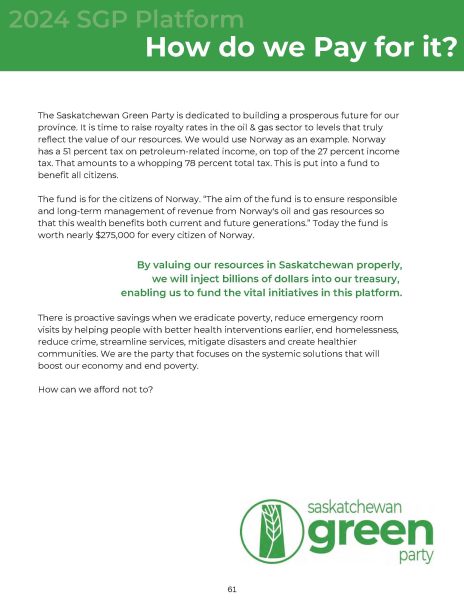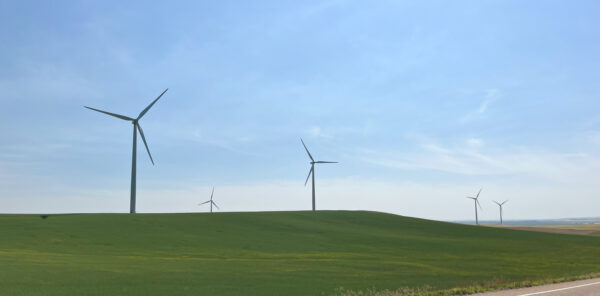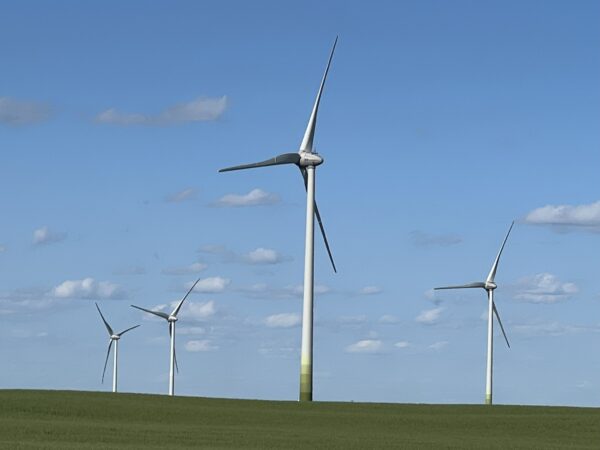
That’s one way to lose an election



Saskatchewan is rebuildings its coal fleet. Here’s a chance to hear from Crown Investments Corp and SaskPower Minister Jeremy Harrison explain how this came about. It’s the biggest energy decision in 10 years. If you work in the coal industry in take time this weekend to watch/listen.

SaskPower awards major wind and solar projects to Meadow Lake Tribal Council, Mistawasis Nêhiyawak and Potentia partnerships
All-of-the-above approach: SaskPower Minister’s speech at wind and solar announcement
Meanwhile:
Energy Realities Podcast: Spain and Portugal’s major blackout

Op-Ed: Aleana Young: Prairie Powerbroker: Energy Sovereignty and Economic Security for Saskatchewan.
Note: count how many times coal is mentioned.

Saskatchewan is looking to rejuvenate coal, not abandon it: in-depth with Minister Jeremy Harrison.
If SaskPower carries through with rejuvenating coal, it will save three power plants, two mines, ~1000 jobs and two communities.
The significance of the shift on coal cannot be understated. When SaskPower’s then-CEO Mike Marsh came to Estevan in 2018 to say they would not be installing carbon capture technology on Boundary Dam Units 4 and 5, it wasn’t the obituary for the community, but it sure felt like the cancer diagnosis. And with no talk of carbon capture for Coronach’s Poplar River Power station, it seemed all but certain that town would whither away once the coal plant and related mine shut down by the federally mandated 2030 deadline. The January, 2025, announcement of SaskPower looking to rebuild both Boundary Dam and Poplar River, if carried out, would be a decades-long reprieve for both communities.
To extend the metaphor, effectively Estevan and Coronach just went into chemotherapy, and the results may be positive.
The implications of this change in direction, from the impending death of coal, to its possible rejuvenation, have local, provincial, national and international aspects, detailed in the story.
Watch for the Pipeline Online Podcast, Episode 2, to be broadcast on LinkedIn, Facebook and X at 1 p.m. on Friday, Jan. 24.. Crown Investments Corp Minister Jeremy Harrison is the guest, where we will delve even further into this new direction on coal-fired power generation.
X (works best): https://x.com/Pipeline_Online
LinkedIn: https://www.linkedin.com/in/brianzinchuk/
Facebook: https://www.facebook.com/pipelineonlineca/
It will eventually be posted to YouTube, Apple Podcasts and Spotify

Scott Moe 2024 in Review: Nuclear, Coal, Wind and Solar Power Generation
Also:
Enbridge’s Weyburn wind project open house, Part 5: Health, setbacks, provincial dollars
(conclusion of series)

I worked on this story for many days with one of the proponents whose family will account for around half of the land assembly for the project. The number was initially a lot higher but the project has been changed and adapted. He has some strong points in favour of wind development, and they should be heard.
This is what they call “journalism,” as in telling multiple sides of a story. And no one else is writing in depth stories like this in Saskatchewan.

That being said, I have another wind story about a great day of wind production in Alberta on Sunday – 74 per cent output. That’s four orders of magnitude better than it was at noon precisely seven days before. But that also caused pool prices to hit zero for 12 hours.
Again, I point out the problem with no one making money is no one is making money. That’s unsustainable. And the proposed reforms in Alberta will make it much worse, by introducing negative pricing. Ridiculous! Nothing with intrinsic value should ever be zero. Ever.

This is huge – Alberta wind and solar projects will have to put up the reclamation costs up front before going ahead. Should Saskatchewan do the same? Alberta releases new rules and no-go zones on wind and solar projects.
And the new rules mean when these turbines you see come down at end of life, they likely will not be replaced.
Also:

And not even all of it, according to SaskPower Minister Jeremy Harrison, whom the other media are apparently ghosting by not actually quoting him as minister.

What did 1722 Alberta wind turbines have in common? 0.007 per cent output at noon on Sunday
But hey! At that very moment, at noon, solar’s output was less than 10 per cent!
The number was so low that if you enter those numbers into your Windows calculator app (0.39 megawatts / 5476 megawatts), it will give you the scientific notation of 7.121986851716581e-5.
That’s right – the percentage was in scientific notation, because normal numbers don’t go that low. And this is after many, many billions spend on wind.
I keep asking: Why are we throwing away what we know works, for what we know absolutely does not work?
Electricity is the very oxygen of our economy. When you have lots of oxygen to breathe, no problem. The very second you run out – big problem. And we are entrusting our very lives with technology that continually completely collapses in a widespread basis. Fool me once, shame on you. Fool me 49 times (the number of Alberta wind farms) shame on me. And fool me 1722 times (the number of Alberta grid-scale wind turbines) … well, you get the idea.
Also:
Digging deep on the lithium and potash Crown land sale – a 97:1 ratio on land prices, just 30 miles apart

Brian Zinchuk: How will tripling maximum electrical pricing in Alberta help consumers?
Also:
Pamela Wallin and John Gormley discuss the Saskatchewan election results
Ottawa fires back at Alberta’s application for judicial review of carbon price
The loonie is trading at lows not seen in years. Here’s what it means for Canadians
Alberta Premier Smith says lower-than-forecast oil prices could mean budget deficit

You can’t make this stuff up.
The Saskatchewan Green Party proposes to “Make Green Jobs the future of Saskatchewan’s economy by transitioning away from fossil fuels,” while financing its extensive socialist policy platform by modelling Norway which applies “a whopping 78 percent total tax” on oil and gas revenues.
Notably, it includes five pages discussing the Greens opposition to small modular reactors. And the policy document closes by saying on the last page, “How do we pay for it? The Saskatchewan Green Party is dedicated to building a prosperous future for our province. It is time to raise royalty rates in the oil & gas sector to levels that truly reflect the value of our resources. We would use Norway as an example. Norway has a 51 percent tax on petroleum-related income, on top of the 27 percent income tax. That amounts to a whopping 78 percent total tax. This is put into a fund to benefit all citizens.”
That page does not list any other major revenue source, or indeed any revenue source at all, other than heavily taxing oil and gas, the same oil and gas earlier in the document the party promises to transition away from. If the party does succeed in “transitioning away from fossil fuels,” (Page 17) it offers no other source of revenue on the “How do we pay for it?” page (Page 61).

Election 2024: All-of-the-above energy strategy, no changes to royalties: New Democratic Party
This is the third in a series of in-depth interviews with the parties vying for the Saskatchewan election. In it, NDP Energy Critic Aleana Young speaks about the NDP’s all-of-the-above energy strategy.
The greatest threat to nuclear development is not technological or even financial – it’s change in government. This was evident with the Site C Dam in BC, where a new NDP government pumped the brakes, but then ultimately went ahead with it. The NDP in Saskatchewan continue to support nuclear power development, but “we have to get it right.”
As I’ve done with the other parties, I reproduced everything I could find in the party platform related to energy. Well, the terms “oil” “natural gas” “potash” “critical minerals” “SMR” “nuclear” or “electricity” are not referenced within the document. But “healthcare” comes up 35 times.
Friday will be the Buffalo Party. So far, I have not heard from the Greens, PCs or Progressives. Wonder why? Is anyone else writing 3200 word stories on their energy policies?
On a side note, I attended a three hour long Estevan city council/mayor town hall this evening. It took 2 hours and 25 minutes before anyone made any serious comments about coal. That was right before I got my chance to ask about dealing with the impending eventual shut down of coal-fired power generation, but also preparing the city for nuclear power. Amazingly, about half of the 13 people on stage really had no substantive answer on that front, and several had no clue or hadn’t thought of it. You would think that would be the most important issue facing this city – much more important than sidewalks or boulevard flowers (which got more discussion up until that point than coal or nuclear). Especially since the nuclear built out will be the most costly infrastructure project in Saskatchewan history to date. (If I attend a forum like this, you can be damned sure I’m going to ask the toughest questions.)
Toronto takes step toward ban on misleading fossil fuel ads, following TTC move
Because of course they are. From the Canadian Press
Also:
Alberta government proposing additional restrictions on wind and solar energy

About a month ago I did some serious digging into Alberta’s electrical grid going into zero dollar hours for pricing. As in all the power on the grid, for the generators anyway, was free, for a few hours. I thought I had published it, but apparently not, as I was reminded by @ReliableAB. And funny thing is, it happened again this past weekend.
The problem with no one getting paid is no one is getting paid. No business model is sustainable like that. I don’t care about averaging things out. No one wants to give away product for free, especially if they are paying for inputs like natural gas for fuel and staffing.
And on the renewable thing:
Manitoba to encourage renewable energy while acknowledging fossil fuel use
Wind and hydro actually pair very well together, as hydro can ramp up and down very quickly. Building wind in Manitoba will allow them to build up their reservoirs and maintain more capacity overall, especially in low water conditions like the prairies have seen in recent years. So, believe it or not, I’m not wholly against that idea, for Manitoba, at least. I’m surprised they haven’t built more until now.
Also, this was from the Canadian Press. Take that for what you will.
Canada makes small emissions cut in 2023, but must ramp up to hit key targets: report

SaskPower’s blog speaks about “Misconceptions about wind and solar facilities”
Note:
Facing a groundswell of opposition to a proposed 200 megawatt wind project near Weyburn which would be built, operated and owned by Enbridge as an independent power producer, SaskPower posted the following on its corporate blog on Aug. 23.
That blog posting was then promoted via advertising on social media, including Facebook.
What the blog does not say is that Alberta’s fleet of now 47 wind farms, with a total capacity of 5,214 megawatts was producing 35 megawatts at 3:38 p.m. on Thursday, Aug. 22, according to X account @ReliableAB. That’s after the recent addition of a new 466 megawatt windfarm which is being brought online. And 35 megawatts was 0.7 per cent of capacity at that moment, while 5,214 megawatts is nearly the entire Saskatchewan grid if every single generating facility was running full our, which never happens.
The ads below are not part of the original blog, but part of every Pipeline Online story to pay the bills. This is that blog posting, verbatim.
Solar produces zero power 20 nights in a row. This was indeed confirmed by SaskPower.
Also:
TC Energy eyes data centre growth as potential opportunity
CNRL curtailing production from new natural gas wells as low prices persist

It’s not often an oil company CEO sells his company to run for provincial politics, becoming the leader of an upstart party in the process. But that’s exactly what Jon Hromek has done. And as someone coming from industry, his thoughts on energy transition, CO2 and coal differ from a lot of the other politicians in Saskatchewan, or for that matter, Canada.
Alberta’s last coal plant shuts down, and days later, a grid alert is declared.
Oh, and that new grid-scale battery that SaskPower just went $10 million over the initial announced price on – Alberta has 10 (albeit a different manufacturer). Three haven’t lit a light bulb since March, and they were no shows on Monday.
But that’s okay, the Pembina Institute wrote a piece celebrating the end of coal, which they strongly advocated for over many years. They published it two days before the grid alert.
And it’s going to be hot two more days in Alberta. Anyone want to make a bet there will be more grid alerts?
Again, Alberta has more coal, oil and gas than God, because God gave all of his to Alberta. For that province to ever be running short of energy is a result of sheer incompetence at the top. And Saskatchewan is following that path – shutting down coal, building more wind, solar, and now batteries. SaskPower has had announcements for all three in recent weeks. Will I be writing about Saskatchewan grid alerts, because we failed to heed what is happening west of us?

Read the Government of Canada’s submission, written by Guilbeault
The proposed Clean Electricity Regulations are among the most significant policy moves in recent Canadian history. The fundamental thrust is to all but eliminate fossil fuel combustion from the Canadian electrical grid. On any given day, up to 88 per cent of Saskatchewan’s power comes from natural gas and coal.
If implemented in their current form, they will utterly remake Canada, its economy and society. The Government of Saskatchewan, on June 25, rejected these regulations, based on a report by the Economic Impact Assessment Tribunal, convened under the Saskatchewan First Act. That act, in turn, was brought into law to counter numerous onerous federal climate change initiatives.
Within the tribunals report are all the submissions made by numerous companies and agencies, several of which Pipeline Online is publishing verbatim in the coming days and weeks. But perhaps the most significant was the Feb. 15 submission by Minister of Environment and Climate Change Steven Guilbeault, who, with Minister of Energy and Natural Resources Jonathan Wilkinson, is one of the leading figures from the federal government on this front. As such, his submission is the stance of the federal government. Notably, he does not explain how Saskatchewan is to replace all of its fossil fuel-based power in the 10 years, five months and 30 days remaining from today. Here it is, verbatim